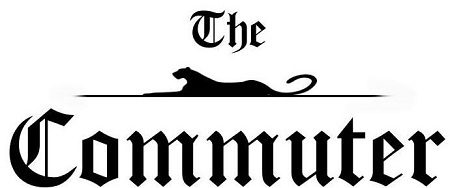“Art is too important not to share,” said Romero Britto, a Brazilian-American painter and sculptor.
The members of Professor Ramón Jones’ creative writing practicum would emphatically agree.
Every spring this small group of students comes together to produce FCC’s magazine of the creative arts, the Tuscarora Review. Over its 39-year history, the magazine has grown from humble origins into a carefully curated compendium of short stories, poems, one-act plays, essays, and visual art pieces — an eclectic fusion of original works submitted by current and former FCC students, as well as faculty and staff.
“Students who sign up for English 222, they become the editorial board for the magazine,” said Ramón Jones, assistant professor of English and faculty advisor for the Tuscarora Review.
English 210, Creative Writing, is a prerequisite for the practicum that assembles the magazine. The combination of these two classes creates a year-long bonding experience for the students involved that translates to the page.
“Everybody in the class were people that I’d worked with last semester in creative writing,” said Kayla Swain, coeditor-in-chief of the 2019 edition. “It was really nice to see all the old familiar faces and be able to work with them on something, take the skills that we had learned in creative writing and put them to use here.”
Swain already knew that she loved to write — she is transferring to Hood College after this semester to pursue a degree in English with a concentration in creative writing — but her experience selecting and polishing pieces for the magazine opened new avenues of interest.
“I found I had a great joy for helping people edit their work and make it better,” Swain said. “That just brings me happiness to see that I’m helping someone work through their struggles with the writing process.”
And when the print magazines were delivered at the end of the semester? “All of us were just smiling from ear to ear,” Swain said. “All this hard work, all this editing, contacting people, making sure that everything was right culminated in this wonderful piece.”
The practicum also teaches transferrable skills that transcend the arts. Pam Clark, former associate professor of English and faculty advisor for the Tuscarora Review until her retirement in 2013, explained that it was particularly rewarding to watch her students go through the process of negotiating what it means to be part of a group. “Because that’s certainly a life skill you’re going to have to polish for your entire career,” Clark said.
She also greatly appreciated the artistry of her fellow faculty members.
“I really loved, loved, loved watching Lisa [Sheirer] come up with the cover design,” Clark said. “Back in the day we sent it out before Lisa was involved with it. We sent it out to a professional and you got one cover. That person decided and that was it. Lisa would give you three or four different visions for the cover.” Clark added, “Just watching Lisa’s expertise in that way, it was fabulous.”
“I love publication design so that was a wonderful thing to work on,” said Lisa Sheirer, who retired last year as program manager of computer graphics and photography at FCC. In her 18 years working in various capacities with the Tuscarora Review, Sheirer saw the publication evolve as students were given progressively greater amounts of responsibility.
“They had been hiring a design firm off-campus to design and produce it,” Sheirer said. “And I said, ‘Well, I can do it.’ I did it for a pretty long time — 15 years I guess — and then I decided that it would be a really great project for my students to do.”
Since then the magazine has been a joint project of Jones’ creative writing practicum and Sheirer’s graphic design students.
Another important development in recent years is the ability to submit electronically. Students and faculty can now email their work to [email protected] or deliver it in person to room H243 in the Student Center. Work is accepted year-round with a cutoff date of Jan. 31, meaning the magazine is already accepting literary and visual pieces for the 2021 edition.
“Just put forth your best work,” Jones said. “That’s a big thing. We’re always looking at who takes the time to proofread and edit and revise their work before submitting.”
Asked if he ever submitted his own writing while a college student Jones said, with a smile, “I think once I did and I got rejected.”
The submissions process helped hone the professional aspirations of another former teacher.
“I submitted some poems and had some published,” Clark said, “but my poems got longer and more narrative so I finally figured out that what I really wanted to be was a fiction writer. That’s how I got into mystery.”
Pam Clark is currently traveling to writing conferences around the country to promote her first mystery novel, “Shoot if you Must,” which she began writing while a professor at FCC.
For those who long to unleash their inner Stephen King but find perfectionism to be a stubborn obstacle, the student editors know how you feel.
“I have that fear: it’s never going to be good enough,” Swain said. “But it doesn’t have to be good the first time around. Just get it on the paper, then go back and edit, revise, make it into what you want it to be. But the most important thing is getting the ideas on the paper.”
Her final message to her fellow students: “Submit to the Tuscarora Review.”
The submission form for the Tuscarora Review can be found at:
https://www.frederick.edu/student-resources/download/student-publications/trsubmissionform.aspx

